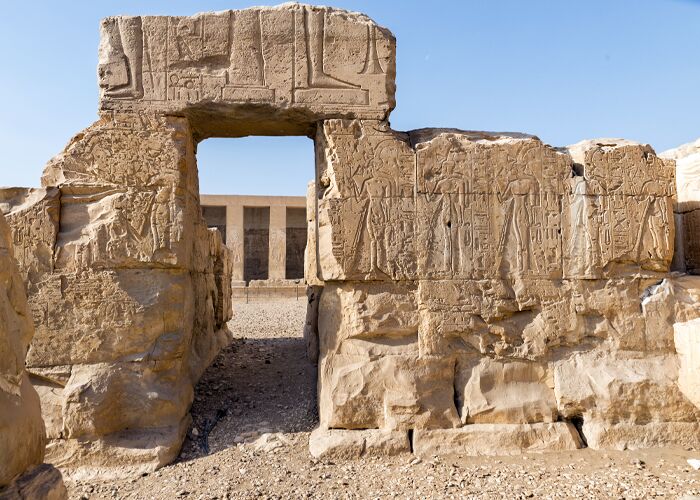It is a UNESCO World Heritage Site in Egypt’s Temple of Abydos
ABYDOS, the cult center of the deity Osiris, is situated around 11 kilometers (6.8 miles) west of the Nile in Upper Egypt, and like Muslims and Hindus, the Ancient Egyptians had a great yearning to undertake a trip to this location once in their lives.
Luxor lies around 130 kilometers (80 miles) to the north of Abydos, the ancient city of the Pharaohs.
For more than 2,000 years, it was Egypt’s most significant burial ground since it represented the entrance to the underworld and was the site of the burial of Osiris’ head.
“The hill of the symbol or reliquary” is how the ancient Egyptians referred to Abdju, the location where Osiris’s sacred head was kept, according to legend.
In the same manner as Muslims try to visit Mecca once in their lifetimes and Hindus want to die in Benares, the Ancient Egyptians longed to visit ABYDOS (pronounced “Abi-dos”).
To honor those who couldn’t make it, the family buried their ashes at Abydos or adorned distant graves with images from the journey ( represented by a boat under sail, traveling upriver). Ancient Egyptians believed that a gateway to the underworld was beyond Abydos in the desert highlands, which led to the expression “the dead journeyed west” being used.
This enabled Abydos to achieve an almost total control over death cults, which lasted until Ptolemaic times.
A renowned tourist attraction since the 1830s, the Temple of Seti I, with its intricate sculptures, is considered by many to be the greatest in Egypt.
Seti’s Temple, built in the 14th century BC and adorned with exquisite carvings, is one of Egypt’s finest architectural achievements. Seti’s son Ramses II, who also constructed a minor temple nearby, put less attention into the facade. Bas-relief excellence distinguishes the Temple of Seti I at Abydos from other temples in the vicinity (daily 8 am -5pm).
As a part of Seti’s efforts to consolidate the XIX Dynasty and recover area that had been lost during Akhenaten’s reign, the finest works of art from the New Kingdom hearken back to the traditions of the Old Kingdom.

